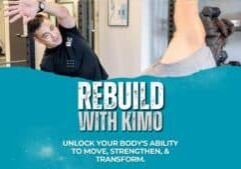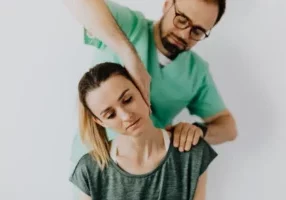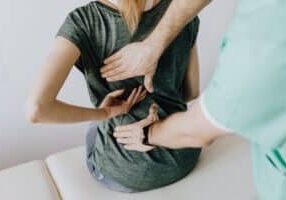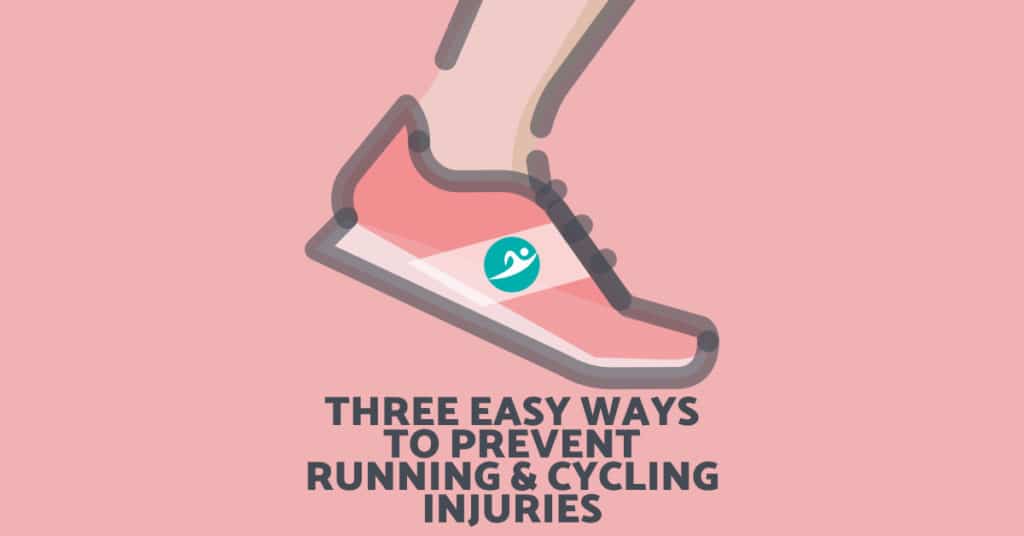
I decided I was going to start running even though I hadn’t worked out in a few years. I started running five days a week right off the bat. About two weeks ago, I ran 4 miles on the treadmill, but by the 3rd mile, I began to get a tightness in my calf and the arch of my foot at the same time. Eventually, I had to stop working out because the pain hurt so bad. It’s been about three weeks since I’ve been to the gym, it hurts too much to work out. My lower leg even hurts when I walk…please help. – Shane
When it comes to getting in shape, one of the first things people think of is running or biking…but like any kind of activity, you need to prep your body for safe movement.
Here’s the thing about running and cycling, they both have the common goal of creating one-dimensional forward motion.
This lack of side-to-side movement places significant stresses on the muscles in both your front and back while demanding little from your lateral (outside) and medial (inside) muscles. As a result, muscular imbalances and repetitive strain injuries often occur in these sports.
The top reason most runners and cyclist get injured is from soft tissue overuse. Soft tissues are considered muscle, fascia, nerves, tendons, and ligaments. When soft tissues are injured, scar tissue forms in the muscles causing an eventual shortening of the structure and pressure on the tendons.
Scar tissue can form in three ways:
1) It just quietly builds up over time. I call this microtrauma. This is what happens to most athletes. You won’t know this is happening until one day that structure starts hurting and then it becomes an acute injury.
2) You hurt yourself (take a fall, sprain an ankle, etc.), or some other acute injury. I call this microtrauma.
3) Hypoxia, meaning your muscles are ultra-tight, which restricts blood flow and oxygen to the area. This causes cell death, fibroblastic proliferation (these are the cells that produce healing and scar tissue), and free radical proliferation which leads to the production of fibrous adhesion.
So, what can you do?
Get out that foam roller and lacrosse ball to do a soft tissue reset on your legs and hips! This slows down the inevitable wear and tear on your body from these awesome but repetitive sports.
New to using a foam roller? Here’s how to get started.
Using a foam roller is very easy, and you are in control of how much pressure to apply. Simply lay your body weight over the foam roller to apply pressure to a specific area. This will release myofascial trigger points and lengthen your muscles. I recommend rolling slowly over an area, finding the worst spots, and then targeting the sensitive spots by holding still there for about 30 seconds.
Make sure to keep breathing and try to relax. Focus on not tensing up your muscles. The foam roller won’t be able to soak into the muscle if you are holding it tight.
Remember you are in charge. Less body weight on the area means less intensity, more weight for more intensity. Start each session with low pressure and then build up. Avoid rolling over bone.
Top 3 Foam Rolling Exercises for Running and Cycling
Exercise #1: Hip Flexors
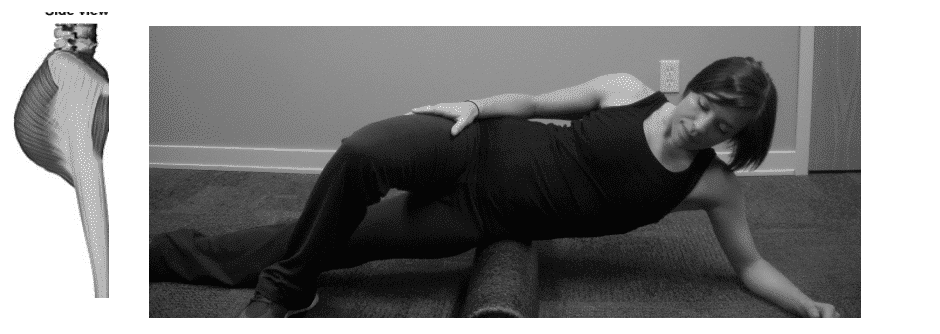
This muscle is a small area, but very important. Make sure to stay below the hip bone. Tilt front to back, and roll up and down slightly. Once you find the sore spot, just stay on it, moving very slightly or not at all
Exercise #2: Quadriceps
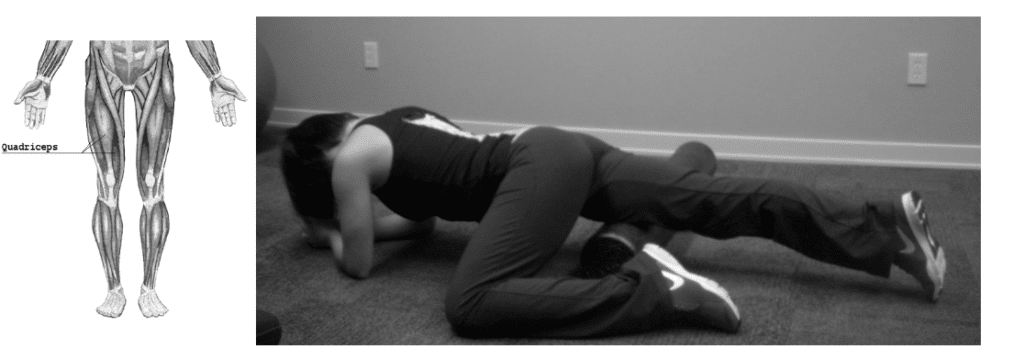
This muscle is a small area, but very important. Make sure to stay below the hip bone. Tilt front to back, and roll up and down slightly. Once you find the sore spot, just stay on it, moving very slightly or not at all.
Exercise #3: Calves
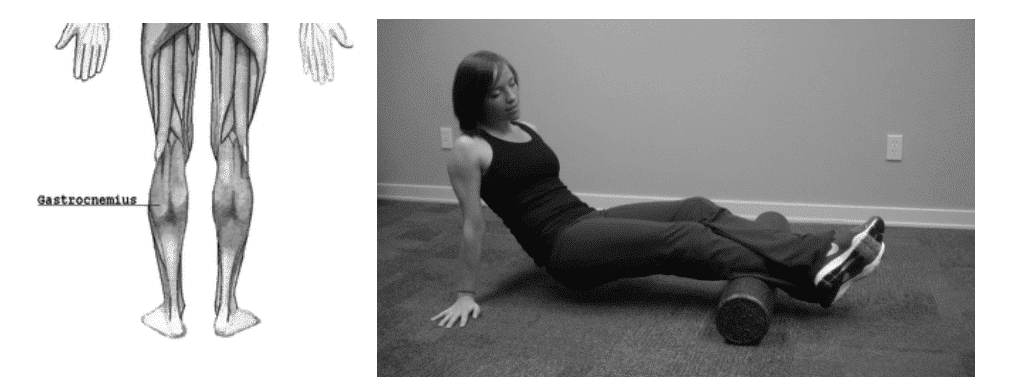
Do one leg at a time. Roll from below the knee to above the ankle. Roll with toes straight, then turn them in and out. Be sure to relax the foot
Running and Cycling Injuries Are a HUGE Problem for LOTS of People…Don’t Give Up Hope!
You are not alone in this.
Soft tissue injuries are thought to occur at a rate of up to 200 billion a year. Despite this huge number of soft tissue injuries, they are diagnosed in very broad terms (such as a sprain, strain, bursitis or tendinitis) and treatments are general (such as ultrasound, non-specific massage, or muscle relaxants).
The medical treatment of soft tissue injuries simply does not have enough specificity. It is also rare to meet a provider who wants to find the exact source of the issue. This creates a huge problem for the great number of folks with a soft tissue injury.
Run on in and stop the injury cycle.
We are experts at manual therapy at Head 2 Toe.
We know how to diagnose and manage any soft tissue injury you might have. If your home care is not working, come in to see us! Call us at (425) 776-2936 or visit our New Patients page to learn more. Check our 60+ 5-Star reviews on Google to hear more from past patients.
Injury-Proof Your Body: How the REBUILD Program Can Help You Prevent Future Pain and Injury
We all know the frustration of an injury that sidelines us from the activities we love. Whether it’s a nagging backache that keeps you from your favorite sport or a sudden sprain that throws off your daily routine, pain and limitations can significantly impact our quality of life. But what if there was a way…
Read MoreBalancing Act: The Impact of Sports Injury Clinics on Work-Life Balance.
Explore how a sports injury clinic can improve your work-life balance in our blog ‘Balancing Act: The Impact of Sports Injury Clinics on Work-Life Balance’.
Read MoreAre Corrective Exercises Effective in Injury Recovery?
Explore the effectiveness of corrective exercises in injury recovery in our blog ‘Are Corrective Exercises Effective in Injury Recovery?’
Read MoreAdvanced Chiro Rehab Techniques: A Revolution in Pain Management
Discover groundbreaking chiro rehab techniques transforming pain management in our blog ‘Advanced Chiro Rehab Techniques: A Revolution in Pain Management’.
Read MoreUnderstanding the Importance of Spinal Rehab for Back Pain
Discover the crucial role of spinal rehab in managing back pain in our insightful blog ‘Understanding the Importance of Spinal Rehab for Back Pain’.
Read MoreExercises You Can Do at Home after a Visit to the Chiropractic Clinic
Stay active at home with exercises from ‘Exercises You Can Do at Home after a Visit to the Chiropractic Clinic’.
Read More
